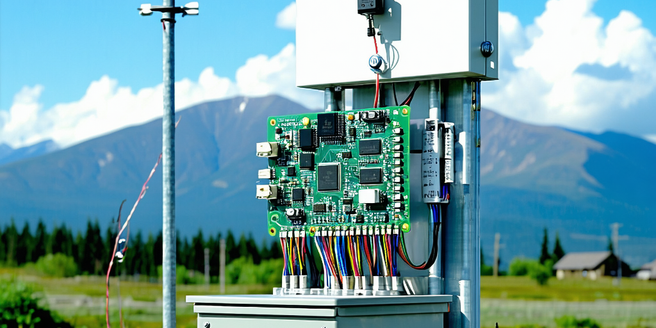
Introduction to Microcontrollers in Weather Stations
Microcontrollers are integral to modern weather stations, acting as the brains behind data collection and processing. These compact devices manage sensors, perform calculations, and communicate with other components to ensure accurate weather data acquisition. By integrating microcontrollers, weather stations can efficiently handle tasks such as temperature, humidity, and pressure monitoring. Due to their versatility, microcontrollers can be programmed to serve specific needs, allowing customization for various environmental conditions. Their low power consumption and compact size make them ideal for remote and off-grid installations. Furthermore, advancements in technology continue to improve their efficiency and functionality, making them indispensable in the field of meteorology.
How Microcontrollers Function in Data Collection
Microcontrollers play a pivotal role in the data collection process of weather stations. They interface with sensors to gather real-time data from the environment, such as temperature, humidity, wind speed, and atmospheric pressure. The microcontroller processes these inputs, converting them from analog to digital signals, which are then used for analysis. Its primary function is to control and manage the multiple sensor outputs, ensuring synchronized data collection. Additionally, microcontrollers often include a built-in memory to store temporary data, which can be transferred for further processing or transmitted wirelessly to remote servers. Their ability to operate autonomously while maintaining precise and efficient data handling is crucial, especially in areas where human intervention is minimal.
Key Components of Weather Station Microcontrollers
Microcontrollers in weather stations consist of several core components that facilitate operation. The central processing unit (CPU) acts as the brain, interpreting and executing instructions. Integrated memory allows temporary storage of sensor data. Input/output ports enable connectivity with various sensors and actuators. Additionally, analog-to-digital converters (ADCs) are crucial, converting sensor signals into a digital format. Communication interfaces, such as I2C or UART, allow microcontrollers to connect with other devices or transmit data wirelessly. Power management units ensure efficient energy utilization, critical for remote installations. Understanding these components and their functions is vital for optimizing weather station performance and reliability.
Benefits of Using Microcontrollers in Weather Analysis
The use of microcontrollers in weather analysis offers numerous benefits, enhancing the reliability of data and the efficiency of operations. Firstly, their ability to process and analyze environmental data in real-time allows for immediate insights and weather predictions. Microcontrollers are cost-effective, providing high performance at a low price point, which makes them accessible for various research and commercial applications. Their small size and low energy consumption make them suitable for deployment in remote and off-grid locations, ensuring continuous monitoring. Additionally, programmable microcontrollers offer flexibility, allowing customization to suit specific environmental conditions or study requirements. Together, these attributes make microcontrollers a cornerstone of modern meteorological technology.
Common Challenges and Solutions for Microcontroller Integration
Integrating microcontrollers into weather stations presents several challenges, including sensor compatibility, data accuracy, and environmental durability. Sensor compatibility requires careful selection and testing to ensure seamless communication with the microcontroller. Data accuracy can be influenced by environmental factors, necessitating calibration and error-checking routines to maintain precision. Additionally, microcontrollers need to operate in harsh conditions; therefore, weatherproof enclosures and durable connections are vital. Innovative solutions like adaptive algorithms and real-time analytics help in overcoming these challenges by enhancing fault tolerance and data reliability. Ongoing technological advancements aim to address these issues, improving the integration process and operational efficiency.
Future Trends in Microcontroller Technologies for Weather Stations
The future of microcontroller technology in weather stations is centered around increased connectivity, improved energy efficiency, and enhanced processing capabilities. With the expansion of the Internet of Things (IoT), microcontrollers will likely become more interconnected, enabling seamless data sharing across remote networks. Advancements in low-power designs will extend battery life, making them well-suited for sustainable, long-term installations. Furthermore, the integration of artificial intelligence (AI) and machine learning capabilities into microcontrollers will enable more sophisticated data analysis and predictive modeling, offering more accurate weather forecasts. These trends demonstrate the potential for microcontrollers to revolutionize weather monitoring and forecasting endeavors.
